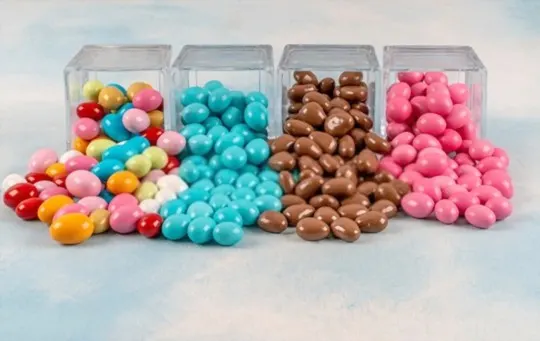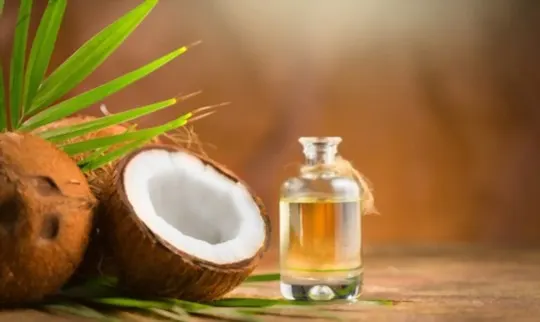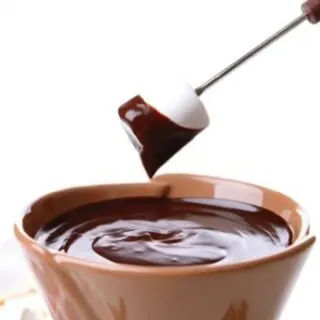Do you find yourself wondering what alternative ingredients you can use instead of paraffin wax?
You’re not alone – many people experience a dilemma when looking for suitable substitutes.
Here’s a helpful guide that outlines the five best options available to replace paraffin wax.
What’s Paraffin Wax?

Paraffin wax is a semi-solid, waxy solid derived from petroleum oil.
It is a white or colorless soft solid that, when warmed, melts into an almost clear liquid and is used in the production of candles, cosmetics, food, and other products.
Paraffin wax has many uses ranging from making candles to being used as a lubricant for producing items such as plastic bottles.
Paraffin wax is composed of several hydrocarbons with carbon atoms linked together with their hydrogen atoms.
This hydrocarbon combination has a melting point between 46 and 64 degrees Celsius (approximately 115 to 147 degrees Fahrenheit), making it easy for consumers to melt and remold when necessary.
Paraffin can also be found in many products as stabilizers, release agents, lubricants, and dust inhibitors.
These properties make it especially useful for manufacturers looking for an economical solution to their product needs.
For candle use, the most popular type of paraffin wax today is container or free-pour wax; this kind of wax does not require a mold but instead can be poured directly into a container or jar for burning directly on to the heat source such as charcoal or match light tapers.
For added design effects such as fragrances or colorants, additives are added to the molten paraffin while mixing; this must be done with care because some additives may react negatively with one another if not incorporated properly into the formulation at different temperatures.
Do you add wax to melted chocolate for dipping?
When melting chocolate and using it for dipping cookies, cake pops, truffles, and other desserts and treats, adding paraffin or other waxes to the melted chocolate is often recommended.
Wax helps achieve a glossy finish, increases shine and extends shelf life.
Paraffin wax is derived from petroleum and provides protection against humidity.
While it isn’t recommended for use directly on the skin or for children’s crafting purposes due to its petroleum based origins, it can be safely used on food items.
Is paraffin wax safe for food?
Paraffin wax, also known as mineral wax or wax composite, is a petroleum-derived product made from saturated hydrocarbons.
It is usually processed at a low temperature, which prevents its degradation and makes it suitable for food applications.
However, questions have been raised in recent years about the safety of using paraffin wax in food products.
The European Commission’s Scientific Committee on Food has stated that the small amount of wax found in food products poses no risk to human health, and is therefore considered safe.
It has also been declared safe by various international organizations including the U.S. Food and Drug Administration (FDA) and Health Canada.
5 Best Paraffin Wax Substitutes in Chocolate
Paraffin wax is a petroleum-based wax that is often used in the chocolate-making process to give a glossy sheen to the finished product.
It has been known to cause irritation in some people, so you may be looking for alternatives.
Fortunately, there are several options.
Here are five of the best paraffin wax alternatives for making chocolate and other confectionery items:
1 – Almond Bark

Almond bark is an easy-to-find wax substitute that makes a great addition to a candle line.
Almond bark is produced from a combination of cocoa butter, vegetable fats, and pure cocoa powder.
It’s made by melting down the ingredients and then allowing them to harden.
Almond bark is available in slabs, flakes, or pellets which make it much easier to incorporate the wax into the candle mold.
It has a smooth creamy texture and easy to work with.
The addition of pure cocoa powder gives almond bark a slightly chocolate scent which can contribute to the aroma when added to your candles.
Almond bark melts at a lower temperature than paraffin wax but produces an excellent hot throw with soy and other types of combustible materials like beeswax.
2 – Compound Coatings
Compound coatings, also known as “hot-dip galvanizing”, involve dipping the object that needs to be coated in a pool of molten metal.
This creates a very strong barrier between the metal and the elements, and this coating cannot be scratched off easily.
Compound coatings work well for products that need to be corrosion-resistant or waterproof such as metal roofs.
The downside is that some products may have an unattractive finish due to the galvanizing process.
If a visual appeal is desired, it may be best to look into one of the other substitutes listed here.
3 – Candy Coatings

Candy coatings are primarily used for coating chocolates and treats, but can also come in handy as a paraffin wax substitute.
Candy coatings are made from fats that have been processed so that the chocolate has a glossy look and the perfect sweetness and texture.
They come in a variety of flavors, including milk chocolate, dark chocolate and white chocolate.
Not only will candy coatings preserve the appearance of your food products, but they will also help to improve their taste as well.
When using candy coating, it is important to note that they tend to melt easier than paraffin wax.
Therefore, they should not be used on high-temperature foods or left out in high heat.
4 – Cocoa Butter

Cocoa butter is similar to beeswax when it comes to providing a moisture barrier in skincare products.
It’s much lighter on the skin too, so it’s great for creating lotions, lip balms, and body butter.
It can also be used as a balm for healing cuts, burns, and diaper rash.
Cocoa butter has a smoother texture that gives it an advantage over other types of wax, such as beeswax or paraffin wax.
Its subtle flavors come from its cocoa aroma and give products a unique taste, although this isn’t always desirable in beauty products.
Cocoa butter typically melts at around 34-38°C (94-100°F), so it’s perfect for crafting homemade beauty products that don’t require high melting points like candles.
In addition to its culinary uses in chocolate making and other desserts, this waxy substance can make hard bars of soap and prevent them from becoming too soft or losing their shape quickly after use.
5 – Coconut Oil

Coconut oil is a popular substitute for paraffin wax as it is also derived from natural sources and has a similar composition.
Furthermore, coconut oil is solid at room temperature, making it perfect for use in DIY projects such as candle-making.
Coconut oil not only lasts longer when used in candles, but it also yields an intense aromatic scent.
While many people use pure coconut oil in their DIY projects and candle-making, there are several variations of the oil that can be used to create different effects.
For example virgin coconut oil (VCO), extra virgin coconut oil (EVCO), and fractionated coconut oils are popular substitutes with slight differences; VCO solidifies more quickly than EVCO and Fractionated Coconut Oil stays liquid at all times due to some of its components being removed during the fractionation process.
In addition to candle-making, these varieties are great for skin and hair care products as they offer deep hydration without clogging pores or feeling greasy.
Conclusion
Paraffin wax is an excellent product for a variety of projects and applications, from candles and crayons to lubricants and beauty products.
But alternatives can be just as effective, depending on the task at hand.
The most popular substitutes for paraffin wax are beeswax, soy wax, plant-based waxes, carnauba wax and microcrystalline wax.
Finally, many people choose not to use animal products altogether when looking for alternative material resulting in petroleum jelly being commonly recommended as an alternative base material instead; however this choice should never replace time tested formulations such as beeswax because of its limited efficacy when exposed to higher temperatures which usually characterize anything refined with petroleum jelly ingredients during manufacturing processes.

5 Best Paraffin Wax Substitutes in Chocolate
Ingredients
- 1 – Almond Bark
- 2 – Compound Coatings
- 3 – Candy Coatings
- 4 – Cocoa Butter
- 5 – Coconut Oil
Instructions
- Choose your preferred substitute from the list of options.
- Organize all of your ingredients.
- Use the proper substitute to cook your recipes.

Carrie is a food writer and editor with more than 15 years of experience. She has worked for some of the biggest names in the food industry, including Bon Appétit, Food & Wine, and Martha Stewart Living.
As the Editor in Chief of IntroChicago.com, Carrie oversees all of the content on the site. She also manages the team of contributing writers and editors, who help to create delicious recipes, helpful tips, and informative articles that you’ll find on the site.
A native of the Chicago area, Carrie is passionate about all things food. She loves trying new restaurants and experimenting with new recipes in her kitchen. She’s also a graduate of the Culinary Institute of America, so she knows a thing or two about food!
